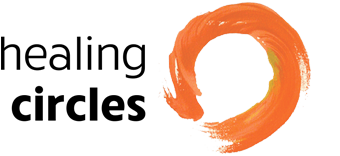Catch and Release
The Big Blackfoot in Montana, featured in Norman Maclean’s “A River Runs Through It,” is a catch-and-release river. That means to protect fish populations, fly fishermen use barbless hooks and immediately release trout back into the river, where they either swim off to be caught another day, or go belly-up and float downstream. As a practice, catch-and-release is somewhat imperfect, and as a metaphor only slightly less so.
Catch-and-release is essentially what we do at Healing Circles Langley, with the very important distinction that we’re not actively seeking out or luring people in, with or without barbed hooks. We simply catch those in free-fall for whatever reason, hold them awhile, and then release them. Sometimes it’s a one-and-done thing, sometimes it’s an iterative process.
I’m often asked—usually by folks who haven’t experienced a Healing Circle—if the stories and situations shared with me somehow weigh me down, deplete me, keep me up at night. That’s not really how it works.
I will catch-and-release; I won’t catch-and-carry. It’s not that I’m cold-hearted, disinterested, or selfish (at least not about that!), but rather that I’m not entitled. It’s neither my place nor my party. It would be entirely presumptuous and arrogant of me to interpret or forecast someone’s evolving circumstance as either a burden to be endured, an opportunity for discovery, or anything in between.
Otherwise, it’s a trap—for everyone involved. People want to help. Some need to help. In my experiences as both a caregiver and a patient, there were times when—despite best intentions—someone’s offer to relieve some of my burden ended up adding to it. Suggestions of what to do and where to turn diverted me from a pretty productive status quo, and when assumptions of what I needed sacrificed what I already had. I can also say with certainty that, not once, did anyone staying awake at night fretting on my behalf actually help me… or them.
In any circle, I’ll listen attentively and confidentially. I might point to other resources in the community if it seems warranted and wanted or share my own experience when pressed and appropriate. If I follow up with the person after the circle, it will be just to say I’m thinking about them; I won’t, however, obligate them by asking how they’re doing. I will support whatever healing path a person wants to take, but I will not deny them their experience of the journey by insinuating myself into it. That, to me, is trespassing on private property. That is using a barbed hook.
Header image courtesy of Loren Kerns, CC BY 2.0




